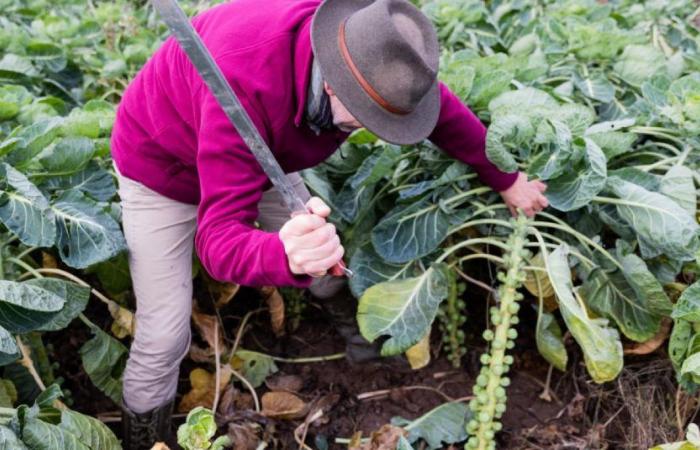The share of organic in agriculture continues to increase in Europe and Belgium. Our country remains, however, below European averages.
Cruising speed: organic agriculture continues to gain ground in Europe, according to a new Eurostat report. In 2023, organic farming represented 16.9 million hectares, exactly one million hectares more than in 2022 and 2.2 million more than in 2021. This is an increase of 8% and 6% respectively. .5%, from 2021 to 2022 and 2022 to 2023.
One tenth of the surface
In 2022, organic represented 10.5% of the agricultural area used, on average for the EU, indicates this same report. The countries with the largest organic share are Austria (27%), Estonia (23%) and Sweden (20%).
Belgium does worse than the European average, with around 7.6%. Organic represents 103,500 hectares in our country (including 7,700 hectares in the process of transition to organic).
The share thus varies greatly between countries, but so does the evolution of this share over the last ten years. Croatia (+306%), Portugal (278%) and Bulgaria (182%) experienced the fastest growth. Across the entire EU, growth is on average almost 80%, between 2012 and 2022. Here too, Belgium is doing less well, with an increase of almost 70%.
Production
But what is this worth in terms of production? In 2022, Belgium produced, still organically:
- 73,000 tonnes of cereals (for cereal production)
- 31,200 tonnes of wheat and spelled
- 1,900 tonnes of rye (and other winter cereals)
- 6,500 tonnes of barley
- 5,600 tonnes of oats (and other spring cereals)
- 8,800 tonnes of corn
- 43,700 tonnes of root vegetables (carrots etc.)
- 72,900 tonnes of vegetables
- 324 tonnes of strawberries
- 9,600 tonnes of fruits from a temperate climate (pears, apples, peaches, etc.)
- 871 tons of grapes
For animals, organic in Belgium represents (in 2022):
- 110,300 cattle (5.4 million in Europe)
- including 24,000 dairy cows
- 52,500 pigs (1.6 million in Europe)
- 28,000 sheep (6 million in Europe, almost half of which in Ireland)
- 9,000 goats (1.4 million in Europe)
- 5 million poultry (2020 figures)
Which led to production, in 2022, of:
- 1,800 tonnes of organic beef
- 2,900 tonnes of pork
- 157 tonnes of sheep meat
- 6,500 tonnes of poultry meat
- 134,400 tonnes of milk, including 130,000 tonnes of cow’s milk and 4,000 tonnes of goat’s milk
For these different points, the data do not indicate the share of organic in total production. However, it would be interesting to see the differences by type of production.






